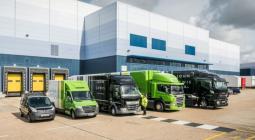San Francisco announces net zero transport transition plan.

The US city of San Francisco has released its “Electric Vehicle Roadmap” policy document, which will help steer the city on a transition to fossil fuel-free transport by 2040.
The city released its proposed Electric Vehicle Roadmap for San Francisco policy document, which will help steer the city on a transition to fossil fuel-free transport by 2040.
The roadmap is marked by numerous interim targets, including more renewables-powered infrastructure.
The Roadmap also plots out six key areas for action, including raising public awareness of electric mobility, the development of charging infrastructure, incentivising zero-emission vehicles adoption, grid integration of renewable energy and electric vehicle (EV) charging, transitioning medium-and-heavy vehicles to zero-emissions technology, and supporting emission-free technologies in emerging mobility options.
The plan further proposes that, amongst other goals, all large commercial parking garages and lots – specifically those with 100 parking spaces or more, install EV charging points for at least one-tenth of the spaces. The plan will affect more than 300 parking locations in the city.
Furthermore, the city and its partners intend having 340 new EV charging stations installed in municipal parking lots across the city.
“By including a lower rate in our proposed TNC Traffic Congestion Tax for electric vehicles, by transitioning our public Muni fleet to electric and by requiring more charging station opportunities, we’re giving San Franciscans options and incentives to go green,” says Mayor London Breed. He added: “Of course we’d like to see walking, biking, and public transit prioritized but if San Franciscans are going to drive, we hope they go electric.”
The Roadmap asserts that San Francisco is a “Transit First” city, where numerous modes of mobility are both available and more affordable.
In April 2019, San Francisco mayor London Breed announced a plan to ensure that all commercial buildings in the city larger than 50,000 square feet be powered by renewable energy by 2030.
The roadmap is marked by numerous interim targets, including more renewables-powered infrastructure.
“By including a lower rate in our proposed TNC Traffic Congestion Tax for electric vehicles, by transitioning our public Muni fleet to electric and by requiring more charging station opportunities, we’re giving San Franciscans options and incentives to go green,” says Mayor London Breed. He added: “Of course we’d like to see walking, biking, and public transit prioritized but if San Franciscans are going to drive, we hope they go electric.”
28 July 2019
SMART ENERGY INTERNATIONAL





